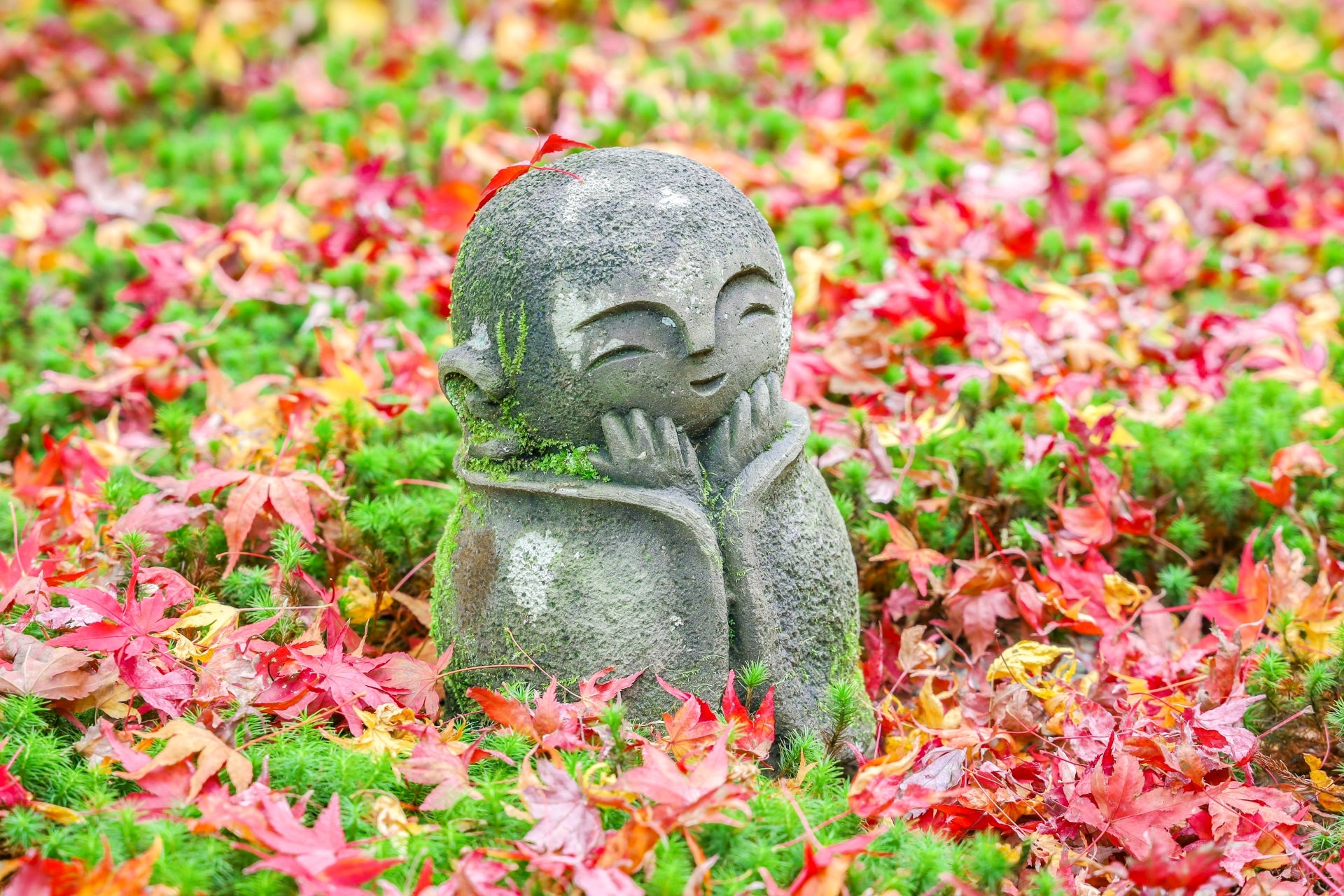Do you believe superstitions?
Any list of superstitions would have to begin with arguably the most well-known and universal superstition: "to knock on wood." You probably may come up with more about it such as "Friday the 13th", "Lucky Horseshoe", "Black Cats" There are also very Japanese superstitions like a popular one is a spider, "friend in the morning, foe at night.” It is believed that a spider in the morning brings good luck while such an occurrence brings bad luck at night. One theory is that the spider's morning visit symbolizes a guest during the day, while the nightly encounter symbolizes a thief.
One of the most widespread superstitions is to not sleep with your pillow facing north. The belief has its roots in Buddhist funeral practice, in which the deceased are laid down with their head facing north. Doing so in your sleep is believed to shorten your life.
Kyoto is getting into one of the best seasons to explore now

Why are the autumn colors of Kyoto described as the most beautiful in Japan? The delicate, almost translucent autumn tints of Kyoto, which derive from the city’s unique plant life and climate, are undoubtedly lovely to behold, but clearly that is not the only reason. In 1994, Kyoto festively celebrate the 1200th anniversary of its birth as the imperial capital of Japan. There are 800 officially registered shrines and 1,700 temples in Kyoto City. The city is home to twenty percent of the nation's National Treasures, and seventeen World Heritage site.
So where should you go?

Yes, I can hear you!! Your question will be about where you should visit in a limited period of time in Kyoto City. In the introduction of this blog, we talk about superstitions which is a beliefs but not scientifically proven. In this blog, we share mainly my favorite places to visit and why I love to go there.
Chion-in Temple (知恩院)
Chion-in Temple is the head temple of the Jodo Sect of Japanese Buddhism and is also one of the most popular Buddhist Sect in Japan. The Sanmon Gate is the main entrance gate with 24meters tall and 50 meters wide. The gate is the largest wooden temple gate in Japan.

This basic information is nothing special. Here is my unique point of view to see in Chion in Temple. Visit Mikage-do. Total 550-meter-long corridor that runs from the Mikagei-do to the Ko Hojo located behind the Mikage-do. When visitors walk along the corridor, they hear a sound similar to that of a Japanese bush warbler's "Hokekyo" It is said that this sound-producing corridor served as an alarm system to detect intruders from the outside. The quieter you walk to avoid making a sound, the more noise is said to be produced. That is why it is also known as "Ninja-barrier. Although no record shows who made it, we feel the skill of the carpenters of the time was extraordinary.
Eikan-do Temple (永観堂)
The temple, renowned for its autumn tints since early times, was founded in 863.Along the corridor leading from the Mikagei-do to the Amida Hall, there is a large pine tree called "Sanko-no-Matsu" (pine tree with three-prongs). This pine tree is said to be a white bark pine native to China. Pine trees usually have two leaves, but this pine has three. The leaves are nearly 30 centimeters long, about five times longer than the leaves of a normal pine tree. The pine tree is called "sanko-no-Matsu" (pine tree with three-pronged handle). It is said that if you carry this pine leaf, you will receive the three blessings of sincerity, wisdom, and compassion, and that if you carry it in your wallet, you will save money. It seems that the leaves of this three-pronged pine tree have the power to bring good luck, just like a four-leaf clover. They are given out for free at a store on the temple grounds, so please take one with you when you visit Eikan-do.

Kegon-ji temple in Arashiyama area (華厳寺)
Actual name is Kegon-ji temple, however more famously known as Suzumushi-dera (鈴虫寺) (Cricket Temple)
Originally, there was a rule that one had to go to the shrine every day until one's wish was granted, but this Kofuku Jizo Bosatsu is different. However, I wish I could find a better picture. It is very rare that the Bodhisattva statue wears sandals so it is said that this Bodhisattva comes to your house to make your wish come true after you make a wish only once. In return, you must pay a visit to the temple and return the amulet after your wish is granted.

How was blog for this week? There are so many temples and shrines to visit in Kyoto, but we all have 24 hours a day. So please most out of it, while you are in Kyoto. Autumn colors dazzle for the moment between departing autumn and oncoming winter. Make sure you take the opportunity to witness their breathtaking beauty, a beauty that could only be created by nature.

